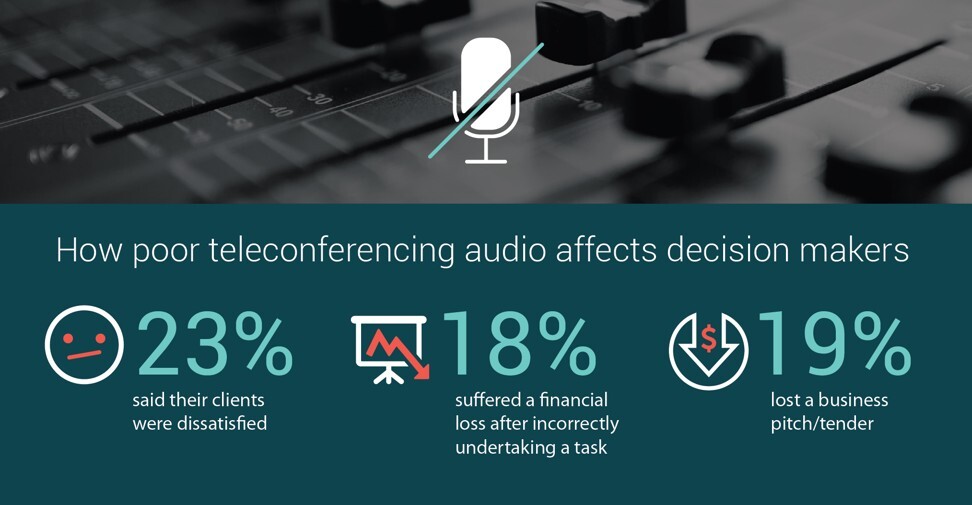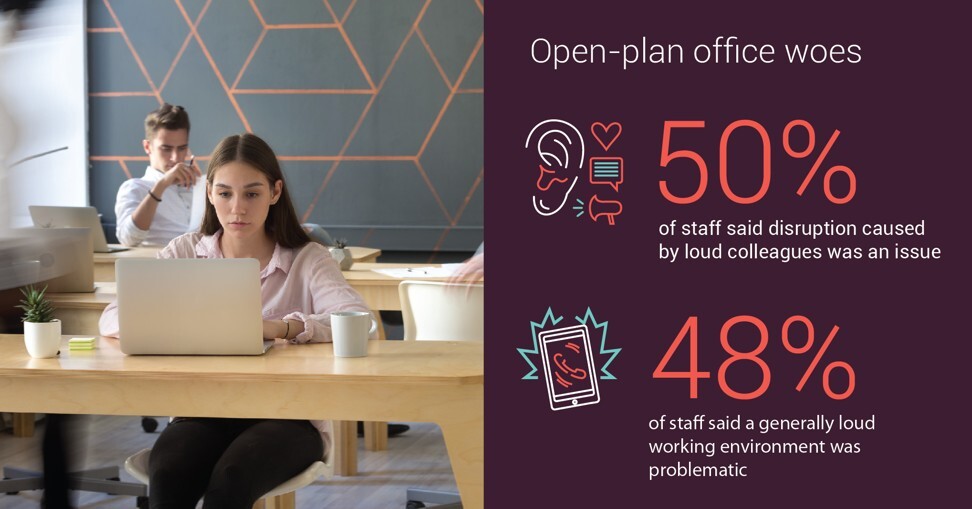More than ever, ‘Sorry, I can’t hear you’ has become the most heard line in offices worldwide
- Danish audio solutions provider, EPOS, says poor audio costs some firms US$70,000 a year in likely income
- Use of teleconferencing will increase after coronavirus pandemic as businesses look to make savings through flexible working solutions

[Sponsored article]
The coronavirus disease, Covid-19, which has swept across continents, has forced the world to readjust to new ways of life.
One of the noticeable changes – with nations around the world in lockdown, leaving schools and companies closed and students and staff working from home – is the sharp increase in the use of online conferencing tools after face-to-face meetings were deemed risky and social distancing became de rigueur.
Although these tools existed long before the start of the pandemic, the drastically increased frequency at which we are using them now means that the sound quality issues we put up with before have become hard to ignore.
In a recently released video by EPOS, a Danish audio solutions provider, office scenarios are re-enacted in which workers are constantly saying to the speakerphone, Can you hear me?” and “What?”.
The video’s narrator says: “What is the most expensive word in business today… that wasn’t a question.”
Can you hear the problem?
Dramatisation and humour aside, the video resonates with millions of office workers around the world who have to put up with these pains in audio conferencing. For businesses, miscommunication and the loss of productivity caused by poor sound quality in conference calls come at a price.
Alongside the video, EPOS released the results of a survey it conducted with global research company Ipsos, titled Understanding Sound Experiences – which questioned 2,500 audio equipment end-users and decision makers from the United States, United Kingdom, France, Germany, Hong Kong and Singapore.
It showed that each employee in the study lost an average of 29 minutes of work time per week because of audio problems during voice calls, which translated to US$725.21 in lost revenue. For organisations with more than 100 staff that equates to potential lost productivity of over US$70,000 per year.

The popularity of open-plan offices – a Silicon Valley-inspired trend widely embraced internationally during the past decade because of the perceived benefit of encouraging collaboration – has also come with undesirable sound problems.
Half of the survey’s respondents said disruption caused by loud colleagues was an issue, while 48 per cent found a generally loud working environment problematic.
Start of new cultural shift
For many Asian countries having to turn to conference calls out of necessity also represents a cultural shift. In Japan, despite the wide availability of the latest telecommunication technology, turning up in person to discuss business remains a requirement, as it is seen as a sign of respect.
Research by the Japanese Ministry of Internal Affairs and Communications last year showed that only 13.3 per cent of the surveyed companies allowed staff to work from home and only 8.2 per cent of employees had telecommuted.

Yet in mid-April, Japanese firm Persol Research and Consulting published results of a survey about teleworking featuring more 25,000 Japanese employees aged between 20 and 59.
It showed 27.9 per cent of full-time staff were working from home after Japan declared a state of emergency in Tokyo and six prefectures from April 8 – later extended nationwide – compared with 13.2 per cent the month before.
This is the country where, only a few months ago, people largely rejected the idea of working from home because of its work culture firmly rooted in face-to-face interaction.
However, a surprising 53.2 per cent of the Japanese workers in the survey said they wanted to continue teleconferencing after the coronavirus outbreak.
Asia’s workspace opens up
For the rest of Asia, the adoption of teleconferencing is likely to continue after the pandemic, too. One of the trends driving change is a general move towards flexible workspaces, not only among start-ups but also well-established corporations.
Last year, Sean Lynch, the Asia-Pacific managing director of workspace innovation company, The Instant Group, wrote an article in the South China Morning Post pointing to the region as the world’s fastest-growing market for flexible workspace centres.

He said large corporations, such as HSBC, Standard Chartered Bank, Datacom and American Express were using large numbers of workspace desks outside traditional office-leasing arrangements in the region, which is served by an estimated 8,600 flexible workspace centres.
These companies were turning to flexible workspaces, in scalable and open-plan layouts, as a low-risk, cost-effective alternative to traditional office spaces to cope with the increasingly challenging business climate, Lynch said.

What it also means is an increased need for the satellite offices of these companies to use teleconferencing when communicating with one another, making staff more likely to experience audio equipment issues as well as background noise disturbances.
Language barriers made worse
Asia – the world’s fastest-growing region economically and the epicentre of globalisation – is also home to large volumes of international trading, especially in places with service-oriented economies such as Hong Kong, Singapore and Tokyo.
World Trade Organisation figures released last year show that the value of commercial services trade rose by 8 per cent to US$5.80 trillion in 2018, which was driven by strong growth in imports in Asia. International business activity calls for a lingua franca, or common language, with English widely adopted.

The continent is also arguably the world’s most culturally diverse, with many different spoken languages. The Association of Southeast Asian Nations, for example, includes 630 million people in 10 countries, which collectively use 14 official languages. It means that for them to communicate between one another, English – a second or even third language for these populations – is often used.
Substandard audio quality in teleconferencing can pose an additional language barrier. A crucial miscommunication or misunderstanding caused by poor audio quality can cost companies dearly, in addition to a loss of productivity.
The EPOS study found that decision makers highlighted other losses caused by miscommunications as a result of audio equipment problems, such as dissatisfied clients (23 per cent), financial loss because of incorrectly undertaking a task (18 per cent), loss of a key piece of work (18 per cent) and loss of a tender (19 per cent).
There is real urgency for the world to find a long-term solution as the increase in teleconferencing is expected to continue post-Covid-19.
Technology to help find your voice
The idea of noise-cancellation headphones to improve audio experiences is nothing new. But just like faster internet speeds and ever-more-powerful mobile communication tools, technological advances continue to push the boundaries of innovation.
EPOS aims to move beyond passive noise cancellation, or noise isolation, into active noise cancellation. So, instead of simply using absorbing material to reduce the effect of surrounding reverberations, this new technology involves playing an anti-noise so that the peaks and troughs are synchronised and inverted with the ambient noise.
The company has also implemented artificial intelligence technology such as EPOS AI, which features machine-learning algorithms to optimise voice pick-up. EPOS AI continually monitors your audio surroundings and instantly adjusts your microphone settings to your environment based on an almost infinite number of parameters, which together ensure that people receiving the call can hear the user clearly and naturally.
New gadgets have also adopted ergonomic designs, which allow them to be worn for long periods without discomfort while saving time spent putting on and taking off headsets.
In future, as teleconferencing evolves into a business necessity, rather than simply an option, the sound quality and clarity while communicating with someone remotely will feel no different than a face-to-face meeting.